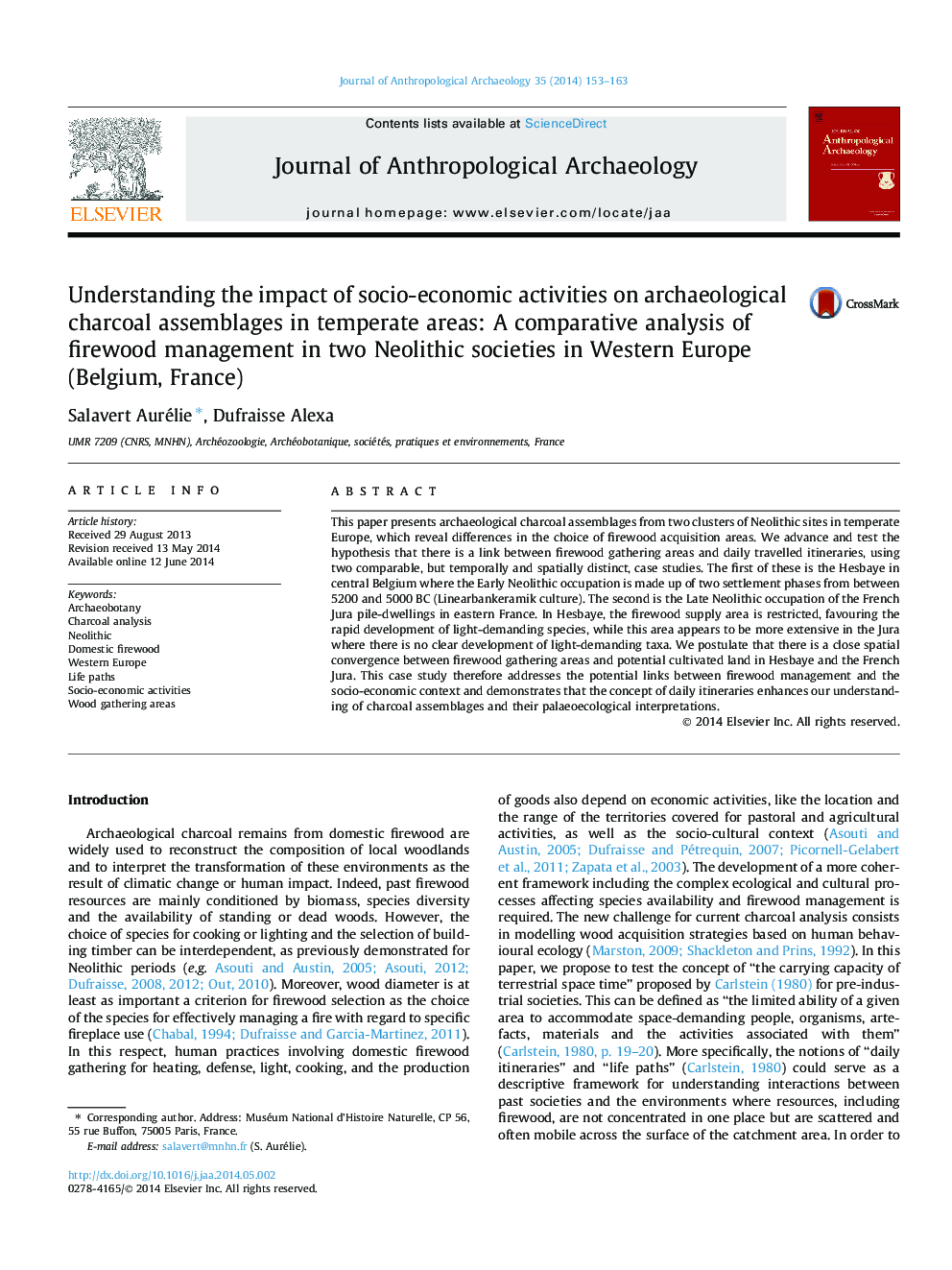| کد مقاله | کد نشریه | سال انتشار | مقاله انگلیسی | نسخه تمام متن |
|---|---|---|---|---|
| 1034962 | 1483855 | 2014 | 11 صفحه PDF | دانلود رایگان |
• To understand the impact of socio-economical activities on archaeological charcoal assemblages.
• To show the importance of cultivated lands location on the expansion of wood gathering areas during the Neolithic.
• To highlight the value in comparing two distant regions showing a comparable settlement pattern and pioneer farming system.
This paper presents archaeological charcoal assemblages from two clusters of Neolithic sites in temperate Europe, which reveal differences in the choice of firewood acquisition areas. We advance and test the hypothesis that there is a link between firewood gathering areas and daily travelled itineraries, using two comparable, but temporally and spatially distinct, case studies. The first of these is the Hesbaye in central Belgium where the Early Neolithic occupation is made up of two settlement phases from between 5200 and 5000 BC (Linearbankeramik culture). The second is the Late Neolithic occupation of the French Jura pile-dwellings in eastern France. In Hesbaye, the firewood supply area is restricted, favouring the rapid development of light-demanding species, while this area appears to be more extensive in the Jura where there is no clear development of light-demanding taxa. We postulate that there is a close spatial convergence between firewood gathering areas and potential cultivated land in Hesbaye and the French Jura. This case study therefore addresses the potential links between firewood management and the socio-economic context and demonstrates that the concept of daily itineraries enhances our understanding of charcoal assemblages and their palaeoecological interpretations.
Journal: Journal of Anthropological Archaeology - Volume 35, September 2014, Pages 153–163
